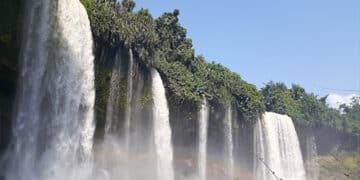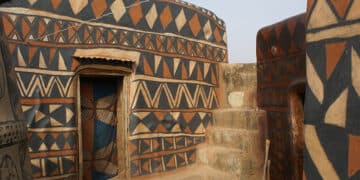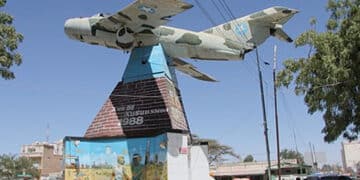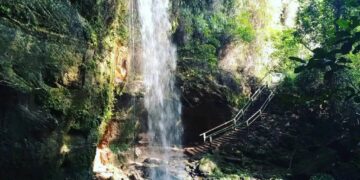Matmata in Southern Tunisia is renowned for its distinctive underground houses. The landscape is rocky with sparse vegetation and the village is nestled quite a distance away from the noise and bustle of the city, offering a historical and cultural experience.
If ever you get the chance to visit Tunisia, best pack your bags to go exploring in the charming and rustic Matmata Underground Houses. There are many interesting sights to see and lots to learn about the place and the people that live there. And if you are a fan of the Star Wars franchise, you dare not hold your head up high if you do not know the significance of the troglodyte houses in Matmata, Tunisia.

Five reasons You should visit The Matmata Underground Houses in Tunisia
Troglodyte Dwellings
The troglodyte houses of Matmata are ancient homes carved into the soft sandstone hills of the region. They were traditionally designed to provide shelter from the scorching heat of the desert. The structures consist of a central courtyard surrounded by rooms dug into the ground, forming a circular or semi-circular shape. These homes offer natural insulation, keeping the interiors cool during the day and warm at night. Picture a cluster of massive craters, each one with cutout hobbit-like holes, and caves carved into the sides that come with natural air conditioning.
Star Wars Landmark
Matmata gained international fame as a filming location for the Star Wars franchise, making it an ideal vacation and exploration spot for any Star Wars geek. The iconic scenes from Episode IV: A New Hope (1977) from the original “Star Wars” film were shot there in a troglodyte home that was transformed into a hotel – Hotel Sidi Driss. It was used specifically to shoot the interior of the underground home of Luke Skywalker.
To this day, Matama retains its Star Wars connection, including the housing props that were used in the filming of “Attack of the Clones”. It is said to be one of the most famous Star Wars landmarks in the world. As a result, Star Wars enthusiasts troop to Matmata to explore the movie sets and immerse themselves in the otherworldly atmosphere.
Traditional Berber Lifestyle
Matmata offers something special for historians and cultural enthusiasts alike, providing a unique opportunity to immerse oneself in the traditional Berber way of life. The local Berber community has inhabited the troglodyte houses for centuries, and some families still live in them today. It is the only home that they have ever known. Visiting Matmata allows you to interact with the friendly locals, learn about their customs, and witness their traditional crafts, such as weaving, ceramics, pottery, leather goods, and wooden carvings.
In 2018, Zohra Bensemra, a photographer working for Reuters, documented the village of Haddej and observed a decline in the number of residents living in underground homes. It was evident that more people were leaving their ancestral homes in search of better opportunities.
Life in the region is a bit difficult with the lack of electricity, as some homes can’t afford solar panels. The unavailability of essential services, and improved infrastructures, makes daily living in the region tough. Although this is a common occurrence worldwide, due to the increase in globalization and connectivity, it sheds light on the decline of knowledge of the cultural heritage of many small groups.

Matmata Museum and Souks
The Matmata Museum is located within one of the troglodyte houses, and provides insights into the history and culture of the region. Traditional artifacts, tools, and household items are on display, giving a glimpse into daily life of the Berber community.
The village has a small market area (souks), where you can find local foods, handicrafts, textiles, and traditional Berber jewelry on sale. The traditional techniques have been passed down from generation to generation and hold cultural meaning and value. The souks offer a chance to purchase unique souvenirs and support local artisans and the community.
Excursions and Accommodation
Matmata provides the opportunity to explore and immerse yourself in the beauty of the surrounding desert landscapes. Excursions can be arranged with the locals serving as guides, to visit nearby attractions, such as the lunar landscapes of Douiret and the Ksour of Tataouine. Several hotels in Matmata also offer the experience of staying in troglodyte accommodations, allowing visitors to experience the unique architectural style.
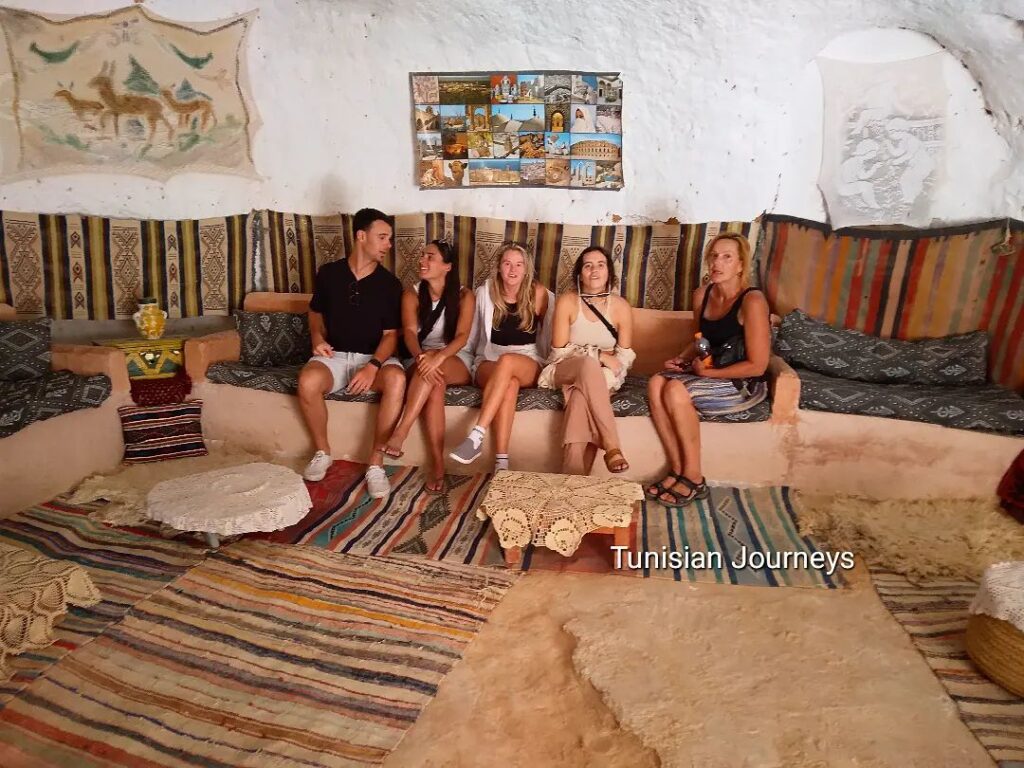
The Future of Tunisia and Matmata Underground Houses
Recent reports of political unrest and xenophobic attacks against African migrants, fostered by Tunisian president, Kais Saied, have placed a black mark on the country. Many lives and businesses have been affected, and according to Sahara Reporters, “A few days after his comments, workers and students from sub-Saharan Africa have been fired, thrown out of their homes, banned from public transportation and assaulted, according to rights groups.” Several individuals and groups have criticized the president, resulting in protests, arrests, and general unrest.
Since the 2011 Arab Spring uprising in Tunisia, the country’s tourism industry has faced significant challenges. These difficulties were exacerbated by the 2015 attacks in Tunis and Sousse, specifically targeting tourists, dealing a further blow to the sector.
For the families in the Matmata underground houses, hosting tourists in their homes was an avenue to earn income and support their community, but with the recent troubles surfacing in Tunisia, their future remains uncertain.
REFERENCES
Atlas Obscura: Matmata Underground Houses
CNN: ‘Star Wars’ locations that exist
Engaging Cultures Travel: The Underground Homes of Matmata Tunisia
The Atlantic: The Last Families Living In Tunisia’s Underground Houses
















